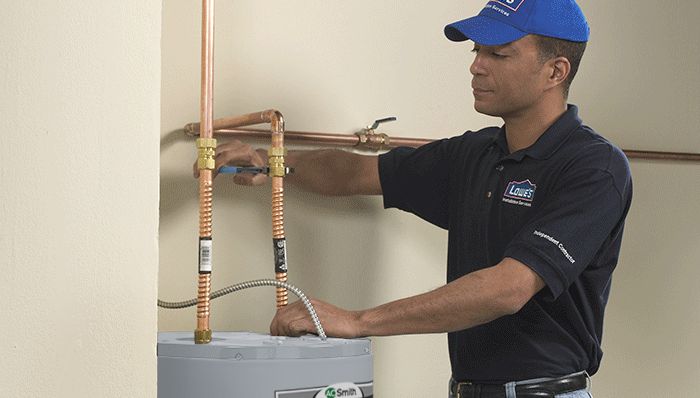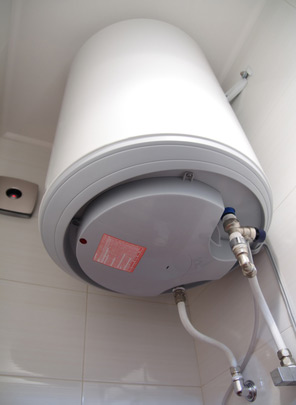The article directly below on the subject of How to Maintain a Hot Water Heater in a Few Simple Steps is relatively intriguing. You should see for yourself.

Warm water is vital for day-to-day convenience, whether it's for a refreshing shower or washing recipes. To guarantee your warm water system runs efficiently and lasts longer, normal upkeep is key. This post gives sensible tips and insights on exactly how to preserve your home's warm water system to stay clear of disruptions and expensive repair work.
Intro
Preserving your home's warm water system might seem overwhelming, yet with a few basic steps, you can guarantee it runs efficiently for years to find. This overview covers every little thing from recognizing your warm water system to do it yourself upkeep pointers and recognizing when to call professional help.
Importance of Maintaining Your Hot Water System
Regular upkeep not just prolongs the life-span of your warm water system yet also guarantees it runs successfully. Overlooking upkeep can lead to decreased performance, greater energy costs, and also premature failing of the system.
Indications Your Warm Water System Demands Maintenance
Understanding when your hot water system requires focus can protect against major problems. Keep an eye out for signs such as inconsistent water temperature level, strange noises from the heater, or corroded water.
Purging the Hot Water Heater
Purging your hot water heater removes debris build-up, improving effectiveness and lengthening its life.
Monitoring and Replacing Anode Rods
Anode rods avoid deterioration inside the container. Inspecting and changing them when worn is important.
Complicated Issues Calling For Specialist Aid
Examples consist of significant leaks, electric issues, or if your hot water heater is regularly underperforming.
Regular Expert Maintenance Conveniences
Expert upkeep can include comprehensive evaluations, tune-ups, and ensuring compliance with safety requirements.
Inspecting and Readjusting Temperature Setups
Changing the temperature level settings makes certain ideal efficiency and safety.
Do It Yourself Tips for Maintenance
You can execute a number of upkeep tasks on your own to maintain your hot water system in leading condition.
Looking for Leaks
On a regular basis inspect pipelines and links for leaks, as these can cause water damages and higher bills.
Comprehending Your Warm Water System
Before diving into maintenance jobs, it's helpful to comprehend the fundamental elements of your warm water system. Normally, this consists of the water heater itself, pipes, anode poles, and temperature controls.
Monthly Maintenance Tasks
Normal monthly checks can aid capture minor concerns before they escalate.
Evaluating Stress Alleviation Valves
Evaluating the stress safety valve ensures it works appropriately and avoids extreme stress build-up.
Insulating Pipes
Protecting warm water pipes lowers warm loss and can save power.
When to Call a Professional
While do it yourself maintenance is advantageous, some problems need specialist proficiency.
Final thought
Routine upkeep of your home's warm water system is necessary for performance, long life, and price savings. By following these tips and knowing when to seek professional help, you can guarantee a reputable supply of warm water without unforeseen interruptions.
Water Heater Maintenance Tips
Test the TPR Valve
Shut off the power and the cold-water supply valve. Place a bucket under the pipe connected to the temperature-pressure-release (TPR) valve on the top or side of the tank. (This valve opens if the tank pressure gets too high.) Lift the valve’s tab to let some water out, then let go. If water keeps flowing, drain the tank partway, unscrew the old valve with a pipe wrench, and install a new one. Check the Anode Rod
Put a hose to the tank’s drain cock and let out a few gallons of water. Now fit a 1 1/16-inch socket onto the rod’s hex head on top of the heater (or under its top plate) and unscrew the rod. If it’s less than ½ inch thick or coated with calcium, buy a new one, wrap its threads with Teflon tape, put it back in the tank, and tighten securely. Use this segmented rod if headroom above the tank is limited. Drain the Tank and Wash Out Sediment
Drain the remaining water in the tank into the bucket, then stir up the sediment on the tank’s bottom by briefly opening the cold-water supply valve. Drain and repeat until clean water comes out of the hose. Close the drain cock, refill the tank, and turn its power back on. Adjust the Temperature
Find the temperature dial on the side of the tank and unscrew its cover. Adjust the dial to 120 degrees using a flathead screwdriver. For every 10 degrees the temperature is lowered, you can expect to save up to 5 percent in energy costs. Turn the water heater off or the thermostat down to its lowest setting if you plan to be away from home for more than three days. Insulate the Pipes
Buy some self-sticking 3/8-inch-thick foam pipe insulation that matches the pipes’ diameter. Slide the foam over the hot-and cold-water pipes as far as you can reach. Insulating the cold-water pipe prevents condensation in summer. Peel the tape and squeeze the insulation closed. If the pipe is 6 inches or less from the flue, cover it with 1-inch-thick unfaced fiberglass pipe wrap. https://www.thisoldhouse.com/plumbing/21016402/how-to-maintain-a-water-heater

I stumbled upon that content about Water Heater Maintenance Tips You Can't Afford to Forget when looking around the search engines. If you please take the time to share this blog post if you liked it. Kudos for your time. Don't hesitate to check up our blog back soon.
Visit My Website